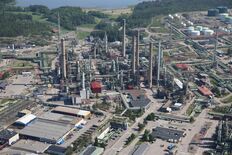- Investment of 111 million euros to upgrade 150,000 tons of liquefied waste plastic per year
- Part of a broader project with a total capacity of 400,000 tons per year
- EU Innovation Fund grant of 135 million euros if fully implemented
- Completion expected in the first half of 2025

Investment and Capacity
Neste has decided to invest 111 million euros to construct facilities for upgrading liquefied plastic waste at its Porvoo refinery in Finland. This new unit will have the capacity to upgrade 150,000 tons of liquefied waste plastic annually. The investment is part of the larger PULSE project, which aims for a total capacity of 400,000 tons per year and has received an EU Innovation Fund grant of 135 million euros if fully implemented.
Processing Steps
Upgrading is one of three key steps in converting liquefied waste plastic into high-quality feedstock for new plastics, alongside pretreatment and refining. This process is crucial for Neste’s chemical recycling strategy, allowing the company to handle lower-quality plastic waste and scale up production of high-quality petrochemical feedstock at the Porvoo refinery.
Project Timeline
Markku Korvenranta, Executive Vice President in Neste’s Oil Products, stated that the new facility is expected to be completed in the first half of 2025. The project involves building new assets and retrofitting existing ones at the Porvoo refinery to efficiently scale up chemical recycling.
Preparation and Construction
Preparatory work at the Porvoo refinery was successfully completed in the first half of 2023, allowing construction to begin without delay. The upgraded liquefied waste plastic will be processed in the conventional refinery, replacing a portion of the fossil resources currently used.
EU Funding and Project PULSE
Project PULSE, which stands for Pretreatment and Upgrading of Liquefied waste plastic to Scale up circular Economy, is funded by the European Union. Neste is the sole beneficiary of this funding, although the views expressed in the project do not necessarily reflect those of the EU or its agencies.

